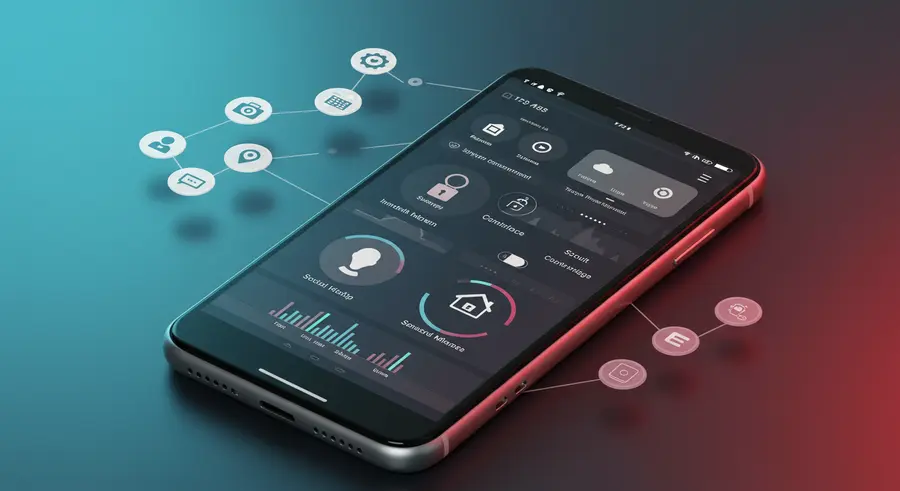Appearance

Welcome, tech innovators and web enthusiasts! 👋 Today, we're diving deep into the exciting evolution of Progressive Web Apps (PWAs), exploring how they are transforming into intelligent, highly capable applications through seamless integration with Artificial Intelligence (AI) and direct Hardware Access.
For a foundational understanding of PWAs, you can always refer to our catalogue page: The Power of Progressive Web Apps (PWAs). But now, let's explore the cutting edge!
What are Progressive Web Apps (PWAs) in this Evolving Landscape?
At their core, PWAs are web applications that leverage modern web capabilities to deliver an app-like experience to users. They combine the best features of web and native apps, offering:
- Reliability: Instant loading, even in uncertain network conditions, thanks to Service Workers. 🌐
- Speed: Smooth animations and responsive user interfaces, providing a fluid experience. ⚡
- Engagement: Installable on the home screen, providing push notifications, and feeling like a native application. 📱
But the PWA story doesn't end there. The true revolution lies in their ability to harness AI and interact directly with device hardware, pushing the boundaries of what's possible on the web.
The AI-Powered PWA: A New Era of Intelligence 🧠
Integrating AI into PWAs unlocks a plethora of intelligent features, making web applications more personalized, adaptive, and efficient.
1. Personalized User Experiences
AI algorithms can analyze user behavior, preferences, and context to deliver highly personalized content and features within your PWA. Imagine:
- Adaptive Content: A news PWA that learns your reading habits and recommends articles tailored to your interests.
- Smart Recommendations: An e-commerce PWA that suggests products based on your browsing history and purchase patterns, powered by AI.
- Dynamic UI Adjustments: A PWA that alters its layout or theme based on your usage patterns or even time of day.
2. Enhanced Search and Discovery
AI-powered search capabilities within PWAs go beyond simple keyword matching.
- Natural Language Processing (NLP): Users can interact with the PWA using voice commands or natural language queries, making navigation more intuitive.
- Contextual Search: Search results can be refined based on user location, past interactions, and real-time data.
3. Predictive Analytics and Automation
AI enables PWAs to anticipate user needs and automate tasks.
- Proactive Notifications: A travel PWA could notify you of flight delays before you even check your airline's website, based on predictive analysis of flight data.
- Automated Workflows: In a business PWA, AI could automate data entry, report generation, or even customer support responses.
Hardware Integration: Bridging the Web and Native Divide 🔗
One of the most exciting advancements in PWAs is their increasing ability to access device hardware, blurring the lines between web and native applications. This opens up a world of possibilities for richer, more immersive experiences.
1. Advanced Camera and Microphone Access
Beyond basic photo capture, PWAs can now leverage advanced camera and microphone features:
- Image Recognition: A PWA for retail could use the camera to scan products and provide instant information or compare prices.
- Augmented Reality (AR): Imagine a furniture store PWA that lets you "place" virtual furniture in your living room using your device's camera and AR capabilities.
- Voice Control & Biometrics: Enhanced microphone access enables more sophisticated voice commands, while biometric APIs can provide secure authentication through fingerprint or face recognition.
2. Sensor Integration
Access to device sensors provides a wealth of contextual data:
- Geolocation & Geofencing: A PWA can offer location-aware services, such as showing nearby attractions or triggering notifications when you enter a specific area.
- Motion Sensors (Accelerometer, Gyroscope): Fitness PWAs can track your activity with greater accuracy, while gaming PWAs can offer immersive motion-controlled experiences.
- Ambient Light Sensor: A PWA can automatically adjust its theme (light/dark mode) based on the surrounding light conditions.
3. File System Access
The ability to interact with the device's file system directly allows for more robust offline capabilities and content management:
- Offline Document Editing: A PWA for productivity could allow users to create and edit documents offline, syncing changes when connectivity is restored.
- Local Data Storage: Enhanced storage capabilities mean PWAs can manage larger datasets locally, improving performance and reliability.
4. NFC and Bluetooth Connectivity
Connecting to external devices greatly expands PWA functionality:
- NFC (Near Field Communication): A PWA could enable tap-to-pay functionality or interact with NFC tags for information retrieval.
- Bluetooth: Imagine a PWA that controls smart home devices, connects to fitness trackers, or interacts with IoT sensors via Bluetooth.
The Future is Now! 🚀
The convergence of PWAs, AI, and hardware integration is not just a theoretical concept; it's rapidly becoming a reality. Developers are now empowered to build web applications that are:
- More Powerful: Rivaling native apps in terms of capabilities and performance.
- More Intelligent: Adapting to user needs and offering personalized experiences.
- More Accessible: Reaching a wider audience through the open web, without the need for app store approvals.
- More Engaging: Providing immersive and seamless user journeys.
As web standards continue to evolve and browser support for these advanced capabilities grows, the "Intelligent Web" powered by PWAs will undoubtedly redefine how we interact with digital experiences. Get ready to build the future! 💡